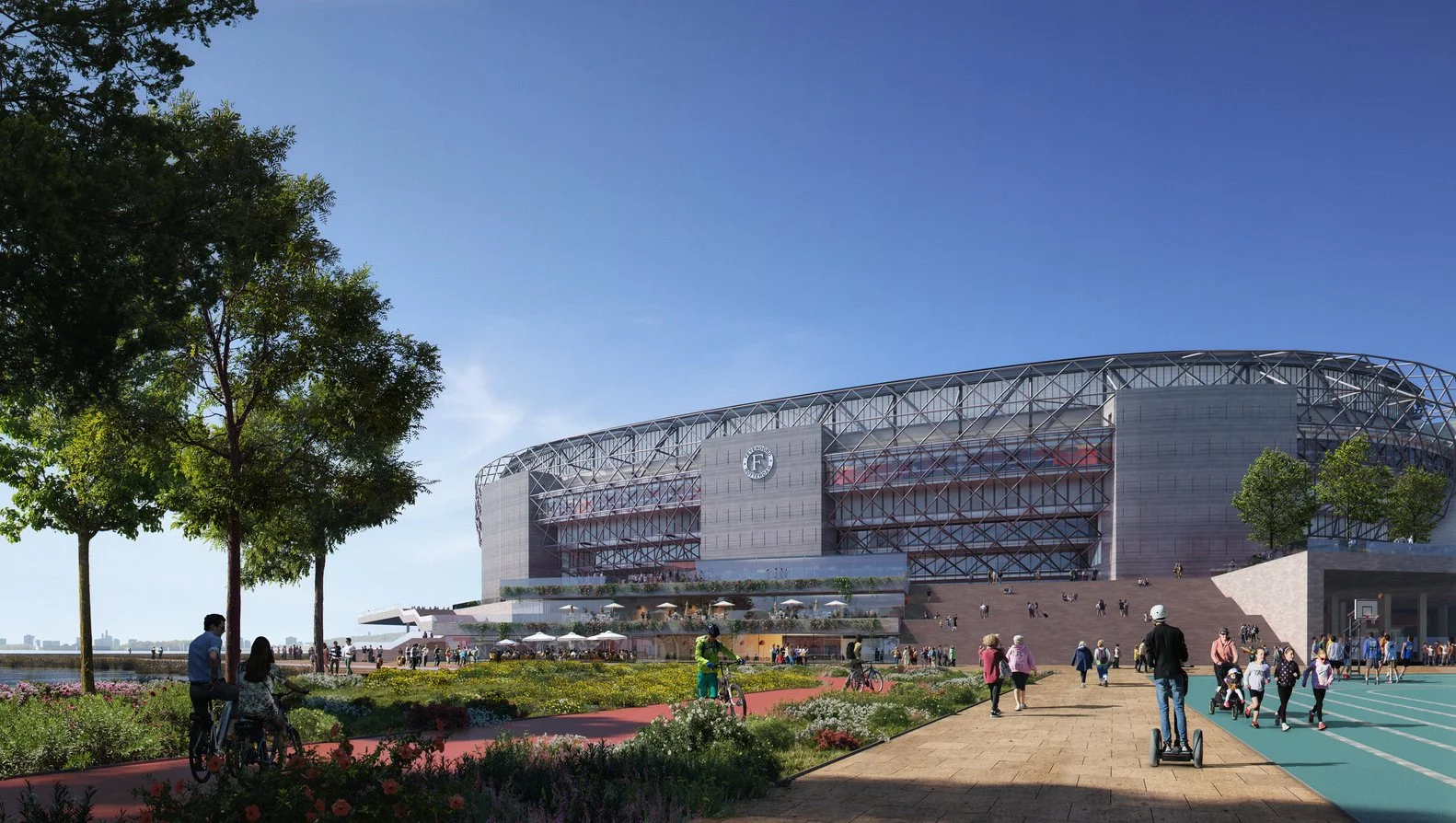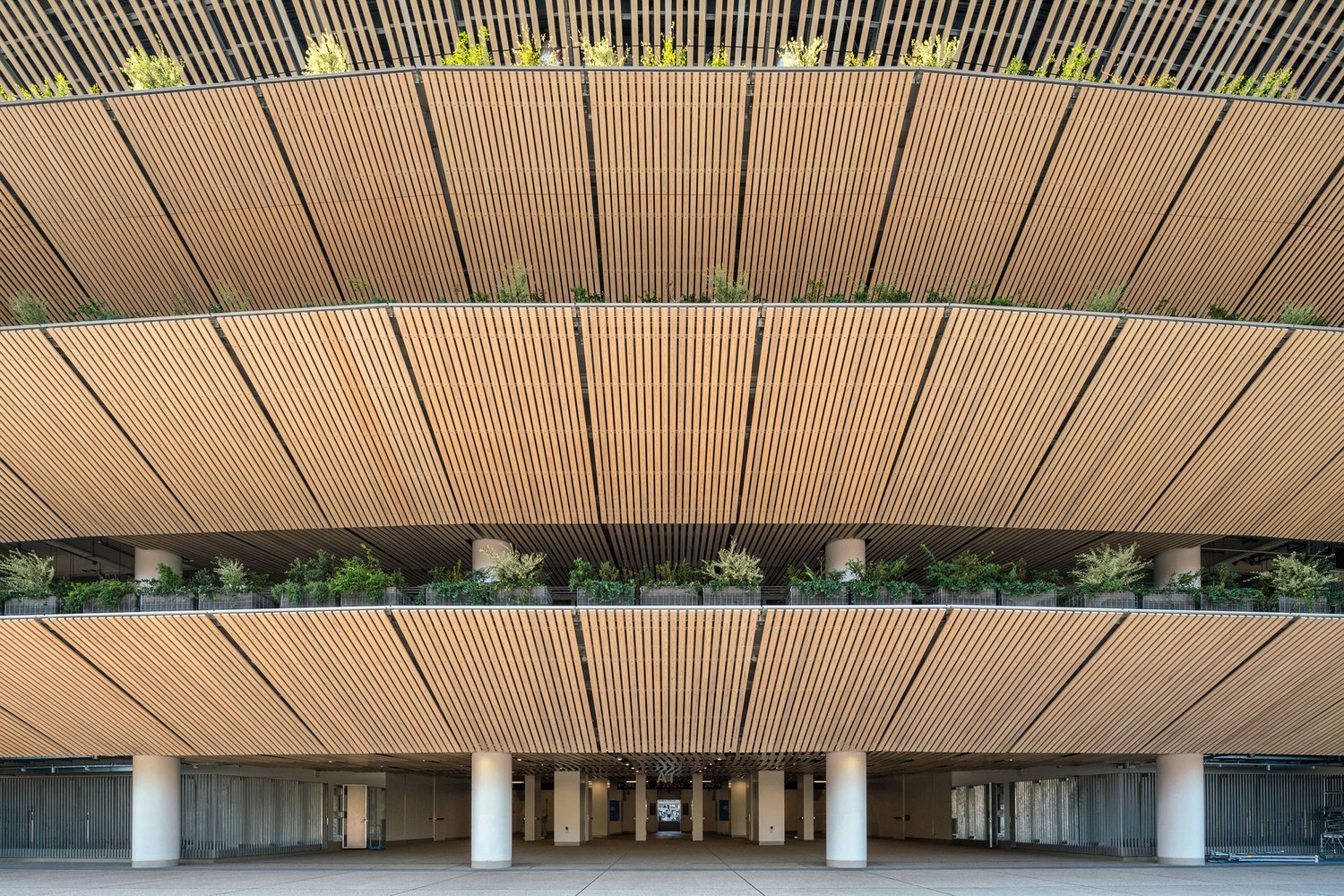
Placemaking
Over the last decade, the commercial office, retail and hospitality sectors have undergone an important period of change in response to societal trends and expectations. Now is the moment for sports stadiums to do the same.
The office sector has transitioned the workplace into a series of flexible, curated spaces incorporating amenities like yoga studios, coffee shops and podcast recording suites. Retail spaces are no longer just places where transactions happen but venues to build brands and consumer communities. Hotels have diversified revenue streams and increased dwell time by activating lobby areas into co-working spaces and meeting rooms.
A similar trend can be observed with how cultural and academic institutions now approach their buildings and campuses. City centre-based universities have improved the relationship between ‘town and gown’ by adopting a more porous approach to design as they develop campuses that are of the city, not just in the city. Museums, libraries and art galleries have sought to broaden their appeal and shed the perception of elitism through a design approach geared towards inclusivity.
From offices to libraries, hotels to shops, the stellar examples in each of these classes are those that have successfully blurred the boundaries between different use classes, replacing a siloed approach to design with one defined by versatility and integration.
Image: LocHal Library, Tilburg, Netherlands
The approaches adopted and lessons learnt from these sectors should provide useful guidance and inspiration for our cities’ sports stadiums as the sector enters a similar phase of reimagining who they are for and how these spaces are used.
Sports stadiums have traditionally operated from a very clear design brief. Thousands of people need to be able to safely access the stadium, watch sport, grab a drink, use the toilet and then safely leave the stadium. The area surrounding the stadium requires the space and functionality to accommodate the match day circus of corporate hospitality, emergency services, player parking, team coaches, press, TV trucks, catering, security and more.
In the early 1990s, the advent of the Premier League and the birth of Sky Sports led to the rapid growth of football as a highly lucrative sport with a truly global audience. Such a boom saw a spate of new stadium projects across the UK as teams including Bolton, Coventry, Derby, Middlesbrough, Reading, Southampton, Stoke and Sunderland relocated from stadiums in central parts of towns and cities to sites on the outskirts where land was more readily available and cheaper. The design philosophy underpinning these projects prioritised functionality, increased capacity, and a stadium that could be easily switched on for match day and off when not in use. Fast forward to today and all but Southampton now sit outside of the Premier League, occupying stadiums with an average attendance below capacity and based in locations that are physically disconnected from their towns, cities and people.
Image: The Madejski Stadium, Reading
One of the most recent football stadium developments in the Premier League, Brentford’s G-Tech Community stadium, illustrates how the out-of-town approach of the 1990s has been replaced by clubs seeking to embed themselves further into city locations. Brentford’s new stadium site is tightly surrounded by rail and road at a busy junction close to the M4 and a short walk to the River Thames. The compact site has restricted the club to a modest stadium which seats just over 17,000. On adjacent land 1,000 flats have been developed, with the capital receipt for the land contributing to the build cost of the stadium.
The G-Tech model seems to work from all perspectives. The site, previously warehousing, has been unlocked for development. Brentford FC has a new, modern stadium which is at capacity each match, and the flats contribute to the vibrancy of the area beyond match day, which helps to enhance the broader appeal of this part of West London.
At the top of the pyramid in English football, Aston Villa, Bournemouth, Chelsea, Crystal Palace, Fulham, Liverpool, Luton, Manchester City, Manchester United, Newcastle and Nottingham Forest are all said to be at some stage of a stadium redevelopment. The current investment in stadiums comes as clubs respond to the introduction of Financial Fair Play (FFP) or Profit and Sustainability Rules (PSR) by governing bodies the Premier League and UEFA. FFP regulation seeks to prevent clubs from spending more money than they make with a stipulation that clubs aren’t recording a combined loss of £105 million across three seasons. FFP rules allow investment into infrastructure, which means any spend on stadiums is exempt of FFP. The regulations therefore open an avenue to use exempt expenditure to create new income streams with the knock-on benefit of greater permitted expenditure.
Image: Tottenham Hotspur Stadium, London
Image: Proposed International Forest Stadium, Milan
In addition to revenue opportunities, there is a growing social imperative on a more integrated, versatile and innovative approach to stadiums, with sports clubs increasingly focused on their ESG (Environmental, Social, Governance) requirements. Stadiums have an important role to play as anchors stimulating wider investment and place-based regeneration and renewal.
New technologies, materials and methods of construction are ushering in greater opportunities to innovate and enabling stadiums to be more environmentally conscious than ever before.
Stadiums can sometimes seem otherworldly, positioned awkwardly in their urban context, detached from the everyday hustle and bustle around them, with a surrounding ground plane often over-scaled and underused. Where possible, stadium design should be approached with the aim of humanising the structure. Through setbacks and façade articulations, provision of views in from the outside, porous design, increased use of nature, and a more generous approach to the public realm, a more inviting architecture can be generated that shifts the perception of a stadium and allows it to sit more comfortably in its context.
Over the coming years we may get to the point where disconnected, mono-use and energy- inefficient stadiums become a stranded asset for clubs and owners, creating a negative brand reputation and limiting future commercial opportunities; Meanwhile, for forward-thinking and progressive sports teams and owners, a connected and versatile stadium will become a prerequisite for a successful team.
Image: Petco Park, San Diego
Image: Stadio Renato Dall’Ara, Bologna
More from Sport+
Sport+ Nature
We look at some of the best global examples where nature has been used to embrace sports stadiums.
Sport+ Community
We spoke to Glen Sutton from Fulham FC to find out about the placemaking led approach to the re-development of their Riverside Stand at the historic Craven Cottage.
Sport+ Sustainability
The Johnan Cruijff ArenA in Amsterdam, home to Ajax FC, has pioneered an innovative new approach to generating energy within the stadium.











